Could our Universe have arisen from a black hole?

And could every black hole our Universe creates give rise to a baby Universe itself?
“Man is something that shall be overcome. Man is a rope,tied between beast and overman — a rope over an abyss. What is great in man is that he is a bridge and not an end.” –Friedrich Nietzsche
If you go back in time as far as you can, you’ll find a Universe that was hotter, denser and more energetic. If you were to extrapolate back to an arbitrarily hot, dense state, the laws of physics that describe space, time, matter and energy break down; you’ll arrive at a singularity. Yet a singularity is also exactly what you find if you were to fly inside a black hole, to the final destination where all infalling matter and energy winds up. These are the only instances in the entire Universe’s history — past, present and future — where a singularity occurs. Perhaps the two of them are connected? It’s not as crazy an idea as you might think.
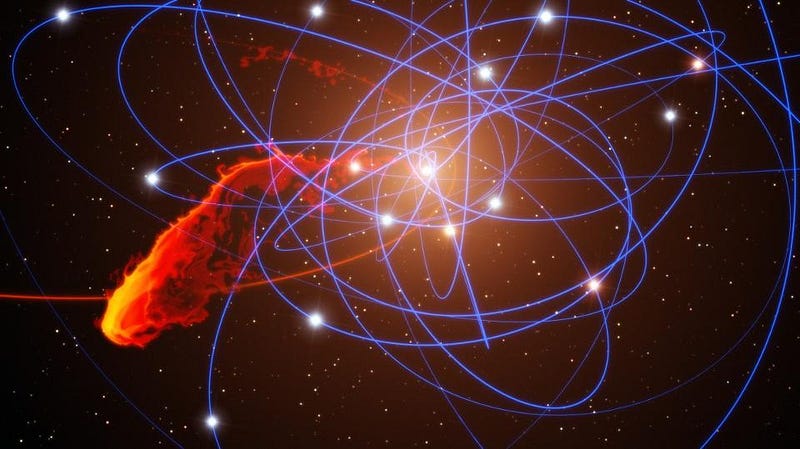
Normally, the Universe is governed by two sets of rules: quantum mechanics, for particles and their electromagnetic and nuclear interactions, and General Relativity, for masses, gravity and the curvature of spacetime. Quantum mechanics tells us that all particles exhibit wave-like properties and have some level of intrinsic uncertainty between position/momentum and energy/time. In particular, every massive particle has a wavelength associated with it: a Compton wavelength, which explains how it scatters in collisions. If you were to take a photon’s wavelength and convert it into mass, via Einstein’s E = mc^2, you’d get a massive particle’s Compton wavelength.
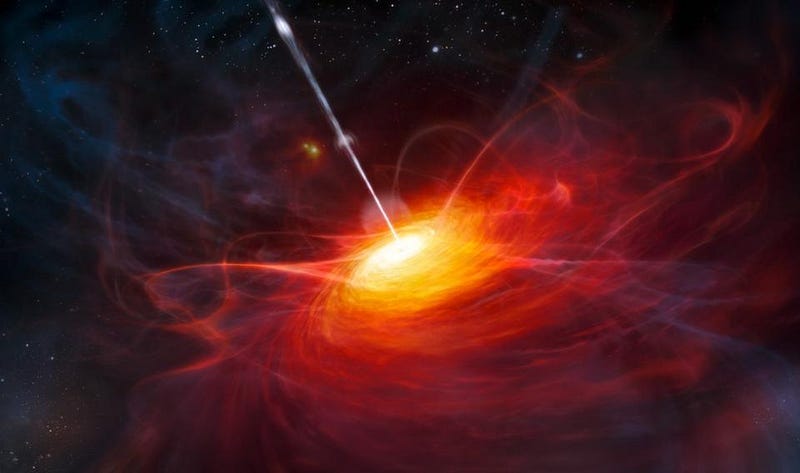
Similarly, you can take a black hole’s mass and calculate how big its event horizon is: the region where space is curved so severely that nothing, not even light, can escape. If you were to take a fundamental particle and allow it to be more and more massive, you’d very quickly reach a point where that particle’s Schwarzschild radius — a measure of its event horizon — was bigger than the Compton wavelength: about 21 µg, or micrograms. The fact that black holes in our Universe are much more massive than this isn’t a problem. It simply means that the laws of physics that we know break down at the singularity we calculate at the center. If we ever want to describe it accurately, it’s going to take a unification of quantum theory with General Relativity. It’s going to take a quantum theory of gravity.

As it stands, however, we can calculate what happens to spacetime inside the event horizon all the way up to (but not including) the central singularity. Surprisingly, with just a coordinate transformation, the space inside a black hole can be mapped, one-to-one, onto the space outside a black hole.

But we can also calculate what happens exactly on the boundary of the event horizon, which is interesting for the reason that any observer outside the black hole will see all the information from the particles that fall into the black hole encoded on the horizon. For our Universe’s black holes, which form in three spatial dimensions, this two-dimensional surface encodes the full suite of information of what fell in. From our perspective, the singularity isn’t “naked,” meaning that we’re prevented from viewing it by the presence of the event horizon. The event horizon acts like a protective, opaque wrapping around the black hole.
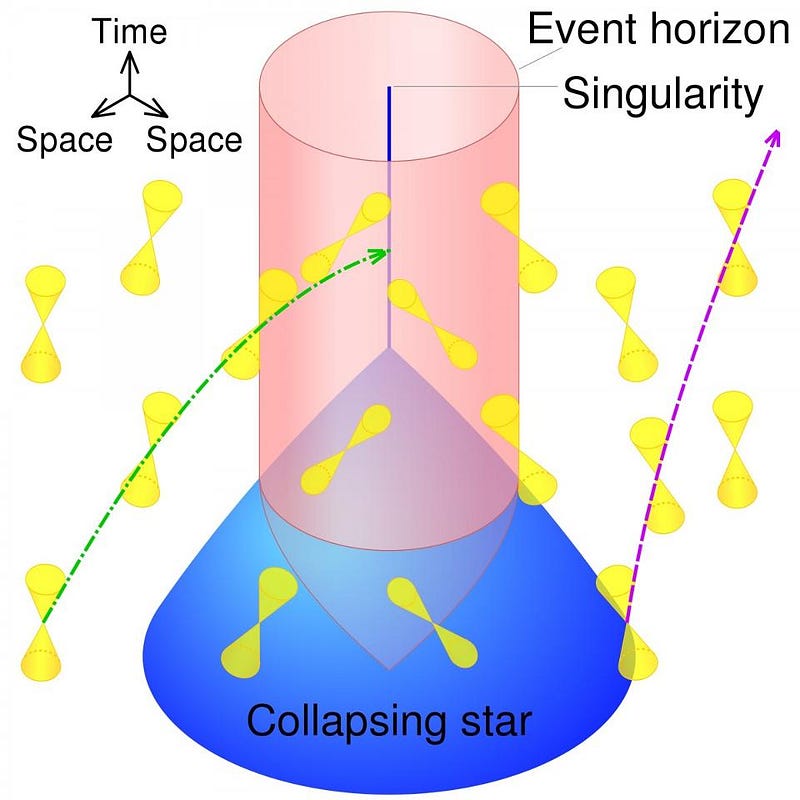
As the black hole first formed, from a star’s core imploding and collapsing, the event horizon first came to be, then rapidly expanded and continued to grow in area as more and more matter continued to fall in. If you were to put a coordinate grid down on this two-dimensional wrapping, you would find that it originated where the gridlines were very close together, then expanded rapidly as the black hole formed, and then expanded more and more slowly as matter fell in at a much lower rate. This matches, at least conceptually, what we observe for the expansion rate of our three-dimensional Universe.
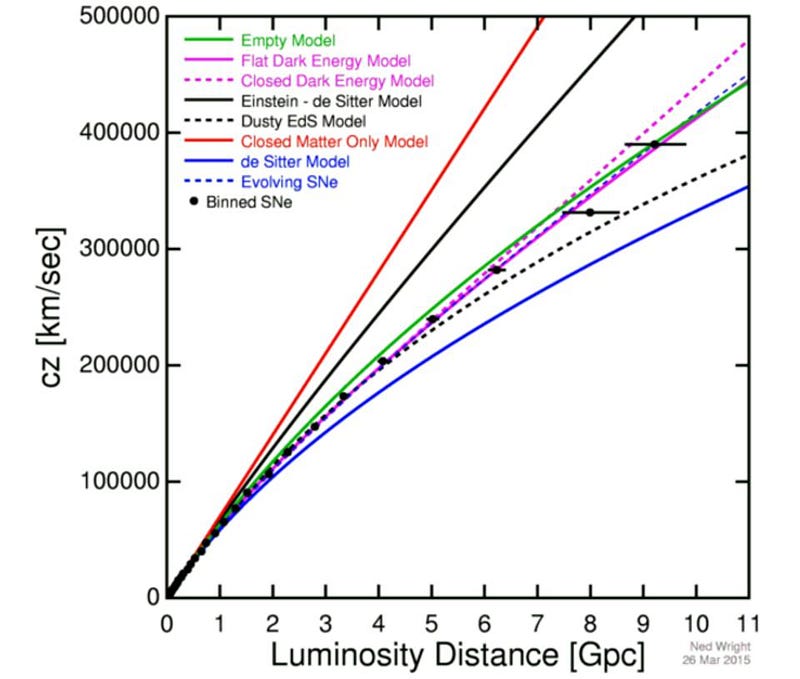
So could our Universe not have originated from a true singularity, but rather as the three-dimensional wrapping of a collapsing, growing four-dimensional black hole? Perimeter Institute and University of Waterloo researchers Niayesh Afshordi, Razieh Pourhasan and Robert Mannproposed this idea back in 2014, and despite their best attempts, scientists have been unable to rule out this scenario. While higher dimensions may be well outside our experience, they could very well be responsible for our cosmic origins.
Does that mean that every time a supermassive star collapses in a type II supernova and creates a central black hole, a new, two-dimensional Universe is created? As crazy as it sounds, the answer appears to be maybe. The event horizon, as far as we understand it, must encode the full suite of information of all the particles that fell into the black hole over its entire history. The black hole’s surface area is exactly the right size to contain all the information necessary, and no more.
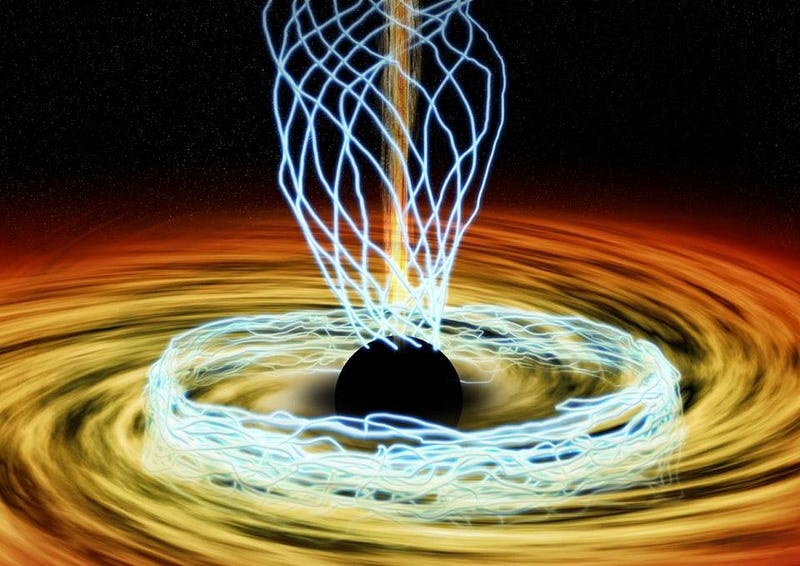
Could our Universe be the analogous realization of a four-dimensional black hole with a three-dimensional event horizon? It’s a possibility that’s too great for us not to consider it, marvel at it, and wonder. And just maybe, it brings up the possibility that if we were to fall into a black hole, in some way, we’d live on for aeons in an entirely new Universe.
This post first appeared at Forbes, and is brought to you ad-free by our Patreon supporters. Comment on our forum, & buy our first book: Beyond The Galaxy!





